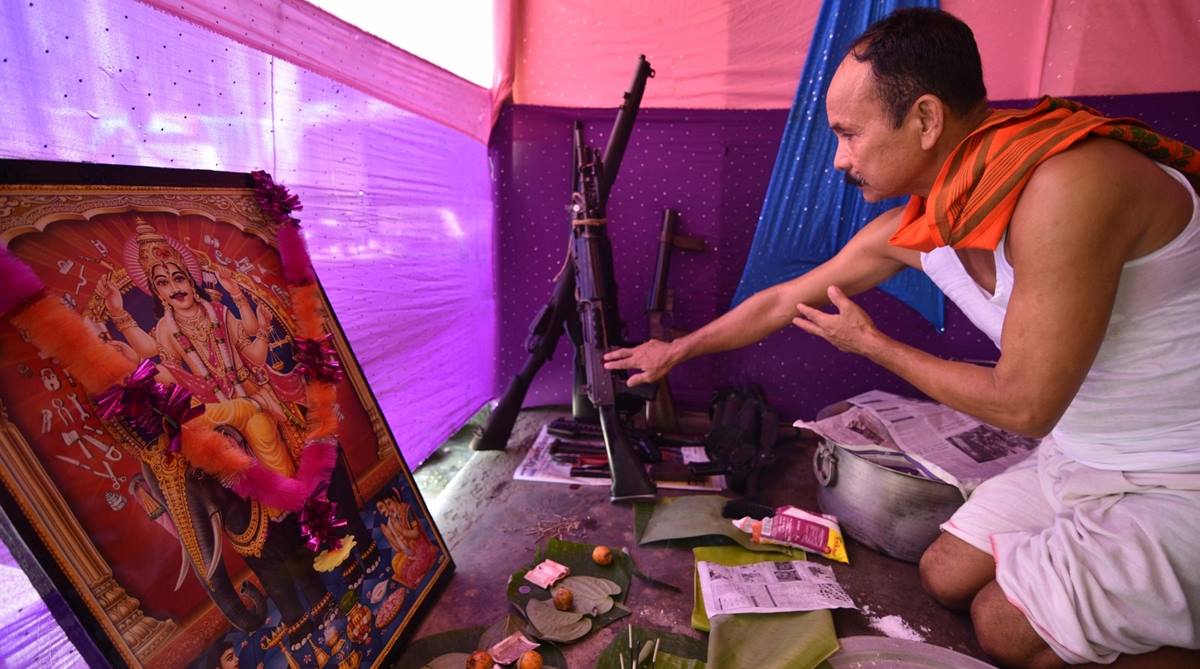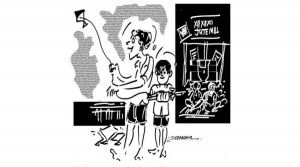When is Vishwakarma Puja 2024? Mark your calendar for THIS date and time
Vishwakarma Puja 2024 falls on THIS date. Find out the auspicious timings and significance of this festival dedicated to the divine architect.
Both kite-flying and factory rituals were an integral part of the boisterous climate on what otherwise wasn’t a red-letter day in the calendar.

A policeman worships arms on Vishwakarma Puja in Guwahati on Sept 17, 2018. (Photo: IANS)
There was a time when the celebration of Viswakarma Puja would begin at dawn with shouts of “bhonkanta” that would be enough to wake everyone in the neighbourhood. That had nothing to do with the essentials of the puja organised by workers of factories in the hope that the machines would keep running till the day they retire — only to make way for their near and dear ones.
Both the kite-flying and the factory rituals were an integral part of the boisterous climate on what otherwise wasn’t a red-letter day in the calendar. But everyone had become accustomed to receiving invitations from small units in the locality where the puja would be performed and the gathering would be treated to a wholesome meal.
READ | Vishwakarma Puja 2018: Date, significance, celebrations
Advertisement
There were factories where a plate of mutton curry would be on the menu but, in most cases, it would be a vegetarian feast that was as delicious. All this meant that it would be an undeclared holiday just when the city would be gearing up for the biggest festival of the year.
Kolkata had then been known to thrive on small manufacturing units and workshops — from sweet shops that produced a delightful variety of sugary delicacies to tailoring units that considered September their best time for business. That was before the depression set in and the celebrations witnessed a drastic fall in numbers. This year the intermittent showers have kept everyone guessing about what will happen when the goddess arrives. The rain has caused other disruptions as well.

The main casualty has been the kite-flying thrills that, in the past, drew everyone from the grandfather to the youngest member in the family. The preparation would begin several days ahead with the collection of different varieties of kites – each with a wonderful name. There were some who had a fascination for the “petkata” while others loved kites with colourful paper tails attached. The final test was the contest in the sky – some of the games being played so far away that the kites were scarcely visible. For children, the excitement lay in spotting a kite floating above and promising to land on the terrace. Sadly, all this has changed despite the efforts by some organisations shift the contest from old terraces in north Kolkata to the Maidan.
The kite and thread shops that thrived on specific locations have fallen on hard times. Children are far too occupied with their examinations around the year to devote much time to kiteflying after school hours. Besides, the cost factor has taken a heavy toll. Where education has become exasperatingly expensive and household budgets have pierced the roof, how much money can one make available for the thrills of kite-flying that is still to be regarded as competitive sport?
It may be difficult to expect a return to the good old days but memories survive. The computerised compulsions of market management, the steady closure of small units and the desperate need to build careers very early perhaps leave little room for the pleasures in the sky or celebrations revolving around the survival of old machines. But stories floating around about the thrills of Viswakarma are pleasing enough even when the festival may have been reduced to modest efforts to keep tradition alive.
Advertisement